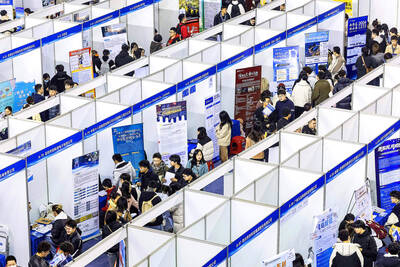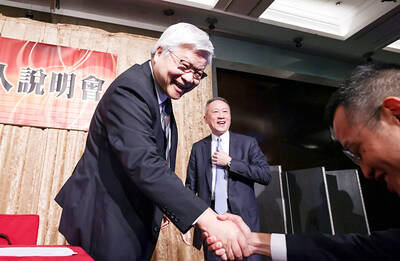Industrial metals plunged and gold rallied as the emergence of a fast-spreading and highly mutated SARS-CoV-2 strain sparked a sell-off across financial markets.
Base metals, including copper and aluminum, fell more than 3 percent in London as investors weighed the risk that the new variant identified in South Africa might spur fresh outbreaks and derail growth in the world’s leading industrial economies.
Scientists say it carries a high number of mutations that could make it more effective at evading existing vaccines.
The new strain creates fresh risks to the outlook for metals demand, imperiling a recent rebound in prices driven by chronic supply constraints that have led to sharp drawdowns in global inventories.
Gold pared recent losses as investors across financial markets questioned whether new outbreaks could complicate central banks’ efforts to withdraw ultra-loose monetary policies.
On Friday, traders rushed to cut back their bets on rate hikes, while safe-haven currencies rallied.
“Metals prices had been picking up on the back of the focus on fundamental physical tightness,” Amalgamated Metal Trading head of research Tom Mulqueen said by telephone. “Now this new virus variant has emerged and the market is in a flight to safety.”
Copper fell as much as 3.5 percent to US$9,459 a ton and traded at US$9,467.50 on the London Metal Exchange, as all base metals traded lower.
Spot gold rose 1.2 percent to US$1,809.55 an ounce, while silver traded little changed, and platinum and palladium declined.
Gold for December delivery on Friday rose US$1.20 to US$1,785.50 an ounce, down 3.6 percent weekly.
“Uncertainty about the possible consequences of the new virus variant clearly reminds the markets that this pandemic is not over yet,” Alexander Zumpfe, a senior trader at refiner Heraeus Metals Germany GmbH & Co, said in a note. “The gold price should remain supported in this environment and the topic of tapering should take a back seat for the time being.”
Iron ore futures also plunged more than 6 percent in Singapore, paring a weekly gain as caution crept back into the market.
Aside from the risk posed by the new variant, there are other, ongoing ones in China’s property sector, while local governments have struggled to find good projects to spend their money on.
Additional reporting by AP

Stephen Garrett, a 27-year-old graduate student, always thought he would study in China, but first the country’s restrictive COVID-19 policies made it nearly impossible and now he has other concerns. The cost is one deterrent, but Garrett is more worried about restrictions on academic freedom and the personal risk of being stranded in China. He is not alone. Only about 700 American students are studying at Chinese universities, down from a peak of nearly 25,000 a decade ago, while there are nearly 300,000 Chinese students at US schools. Some young Americans are discouraged from investing their time in China by what they see

MAJOR DROP: CEO Tim Cook, who is visiting Hanoi, pledged the firm was committed to Vietnam after its smartphone shipments declined 9.6% annually in the first quarter Apple Inc yesterday said it would increase spending on suppliers in Vietnam, a key production hub, as CEO Tim Cook arrived in the country for a two-day visit. The iPhone maker announced the news in a statement on its Web site, but gave no details of how much it would spend or where the money would go. Cook is expected to meet programmers, content creators and students during his visit, online newspaper VnExpress reported. The visit comes as US President Joe Biden’s administration seeks to ramp up Vietnam’s role in the global tech supply chain to reduce the US’ dependence on China. Images on

New apartments in Taiwan’s major cities are getting smaller, while old apartments are increasingly occupied by older people, many of whom live alone, government data showed. The phenomenon has to do with sharpening unaffordable property prices and an aging population, property brokers said. Apartments with one bedroom that are two years old or older have gained a noticeable presence in the nation’s six special municipalities as well as Hsinchu county and city in the past five years, Evertrust Rehouse Co (永慶房產集團) found, citing data from the government’s real-price transaction platform. In Taipei, apartments with one bedroom accounted for 19 percent of deals last

US CONSCULTANT: The US Department of Commerce’s Ursula Burns is a rarely seen US government consultant to be put forward to sit on the board, nominated as an independent director Taiwan Semiconductor Manufacturing Co (TSMC, 台積電), the world’s largest contract chipmaker, yesterday nominated 10 candidates for its new board of directors, including Ursula Burns from the US Department of Commerce. It is rare that TSMC has nominated a US government consultant to sit on its board. Burns was nominated as one of seven independent directors. She is vice chair of the department’s Advisory Council on Supply Chain Competitiveness. Burns is to stand for election at TSMC’s annual shareholders’ meeting on June 4 along with the rest of the candidates. TSMC chairman Mark Liu (劉德音) was not on the list after in December last